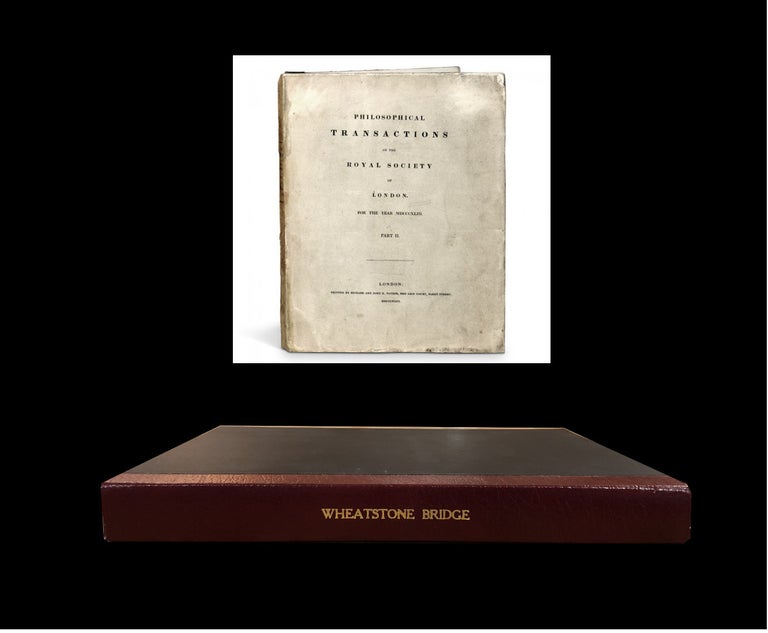The Bakerian Lecture. An account of several new instruments and processes for determining the constants of a voltaic circuit in Philosophical Transactions of the Royal Society of London 133 part II, pp. 303-329, 1843
London: Richard and John Taylor, 1843. 1st Edition. FIRST EDITION IN ORIGINAL WRAPS OF WHEATSTONE’S EXPERIMENTAL VERIFICATION OF OHM’S LAW, including a practical and simple formula by which to calculate resistance and current according to Ohm’s law.
In 1843, English scientist Charles Wheatstone gave a Bakerian lecture publicizing his “ experimental verification of Ohm's law, helping to make the law (already well known in Germany) more familiar in England. In the lecture he also described new ways of measuring resistances and currents, including the rheostat and the so-called Wheatstone bridge, originally invented by Samuel Christie” (Dictionary of Scientific Biography, XIV, 290).
“A Wheatstone bridge is an electrical circuit used to measure an unknown electrical resistance by balancing two circuit paths in a “bridge circuit,” one of which includes the resistance to be measured. In 1833, British scientist Samuel Hunter Christie presented a Bakerian Lecture to the Royal Society that contained a method for comparing the resistances of wires of different thicknesses, the forerunner of the Wheatstone bridge” (History of Physics: The Wenner Collection).
For whatever reason, Christie’s work was largely ignored and “ten ten years later, in 1843, Wheatstone also gave a Bakerian lecture on the experimental verification of Ohm’s law, to help make the law (already well known in Germany) more familiar in England. In the lecture, he also described ways of measuring resistances” and “introduced a unit of resistance in the form of a foot of copper wire that weighed around 6.5 grams. With this, he successfully showed how it could be applied to measure the length of wire from its resistance (ibid; McFadden, Interesting Engineering, 3.1.18). “Although Wheatstone attributed the method to Christie, it became known as the Wheatstone bridge” (Wenner).
ALSO INCLUDED: Grove, On the Gas Voltaic Battery, pp. 91-113 WITH Sabine’s Contributions to Terrestrial Magnetism, Parts IV & V, pp. 113-233. Item #1102
CONDITION & DETAILS: 4to. 12 plates. Original paper wraps showing some wear (see photo) and a few professional repairs, uncut. Enclosed in a custom black and maroon clamshell case, gilt-lettered at the spine. Bright and very clean within.
Price: $800.00

